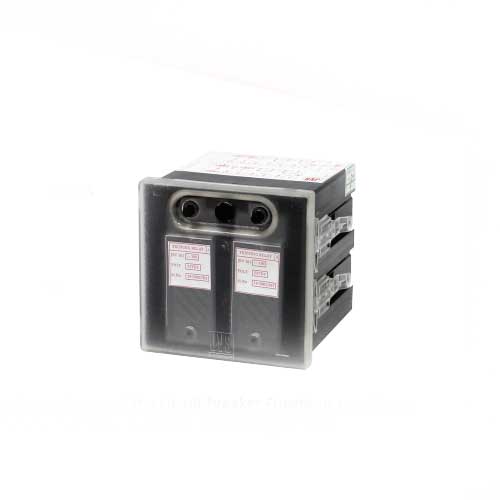Schedule a Call Back
Manufacturing Sector Changes India's Export Trend
 Technical Articles
Technical Articles- Jun 02,11
Diversification of machine tools export basket proves successful
 Indian exports went up by 37.55 per cent to US$ 245.86 billion during FY2010-11, demonstrating robust demand for Indian merchandise not just in Western economies, but in new markets like Latin America and Africa as well.
Indian exports went up by 37.55 per cent to US$ 245.86 billion during FY2010-11, demonstrating robust demand for Indian merchandise not just in Western economies, but in new markets like Latin America and Africa as well.
Imports, however, were higher at US$ 350.69 billion in FY2010-11, despite growing at a lower pace of 21.6 per cent amid increasing crude oil prices. This translates into a trade deficit of US$ 104.82 billion for the 2010-11 fiscal.
With respect to the month of March 2011, India's exports rose by a handsome 43.85 per cent to US$ 29.1 billion vis-?-vis the same month of the previous financial year, according to data released by the Commerce Ministry. On the other hand, imports in March 2011 totalled US$ 34.7 billion, up 17.27 per cent year-on-year. The country's total merchandise trade has almost touched US$ 600 billion - half of India's gross domestic product of US$ 1.2 trillion.
Need to Overhaul Export Basket
It is very clear that Indian exports have still not achieved their true potential and there exists immense opportunities for expanding the basket of India's exports. With a strategic vision of the new markets that are evolving due to free trade, India is witnessing a boom in both manufacturing and services.
Already, India has seen a massive directional change in the context of origin of demand for Indian products. Till 2001-02, North America and the EU markets shared nearly 21per cent and 23.2 per cent respectively of the total exports, and the remaining to the rest of the globe. By 2006-07, North America had a share of only 16 per cent of the total exports and the EU's share was 21.2 per cent.
However, though India has seen some product diversification in its export basket, it has not expanded significantly in the two big markets - Africa and Latin America.
India's business with South Asian countries is also negligible. This region has not been integrated with the global economy, though political and economic initiatives have been taken in the recent past in this direction.
Underlining this facet, Minister of State for Commerce & Industry, Shri Jyotiraditya Scindia, recently said that the country's export basket of services needed overhauling in order to grab number one position in shipments.
"The basket of services needs re-engineering. Today, our basket is mainly of IT and BPO. We have to expand it to education, tourism, engineering and other spheres and make sure that we become market leaders," Mr Scindia is reported to have said. The bouquet of services should be as wide and comprehensive as possible, he said, adding that the services sector had given face to 'Brand India.'
 Stressing the need to tap new markets like West Asia, South Africa, ASEAN, CIS countries and Latin America, to compete with the neighbouring countries, he said: "The government needs to play a role in bringing structural changes in policies to allow sectors like healthcare, education, engineering and aviation to flourish." Referring to countries like China, he said that the country should focus on low cost and greater quality services.
Stressing the need to tap new markets like West Asia, South Africa, ASEAN, CIS countries and Latin America, to compete with the neighbouring countries, he said: "The government needs to play a role in bringing structural changes in policies to allow sectors like healthcare, education, engineering and aviation to flourish." Referring to countries like China, he said that the country should focus on low cost and greater quality services.
Export Trends
In the past ten years, Indian exports have grown at a rate of nearly 22 per cent. Some commodities have enjoyed faster export growth than others. Some of India's main export items are cotton, textiles, jute goods, tea, coffee, cocoa products, rice, wheat, pickles, mango pulp, juices, jams, preserved vegetables, etc. India exports its goods to some of the leading countries of the world such as UK, Belgium, USA, China, Russia, etc.
If the Indian economy grows at the same pace, India would most definitely export goods worth US$ 500 billion by 2013 and may supersede the exports of other large developing countries like Brazil. Already exports have neared the target of Rs 250 billion set for them in the past fiscal.
With the right mix of policy formulation, sector focus and industry-led initiatives it can move up the value chain in the global export basket and become the fourth largest exporter by 2020.
There are a few problems that need to be solved before India makes a mark for itself in the export sector. Indian goods have to be of superior quality. The packaging and branding should be such that countries are interested to import from India. At the same time, India must look for potential markets to sell its goods. The government should frame policies that boost exports.
Diversified Export Basket
In a paper on "Machine Tools: A Sector Study" the Exim Bank had highlighted in 2001 that a sustained export performance required structural change in the composition of exports - movement up the value chain from resource based primary products and low technology and labour intensive manufactured goods into higher value-added items, and diversifying into new and more advanced export-oriented activities.
The study identified Computer Numerical Control (CNC) machine tools as high-growth area for Indian machine tool industry in the near future. CNC machine tools contribute 48 per cent, by value, of all machine tools produced at present.
General Purpose Machines (GPMs) are fast losing markets due to lack of competitiveness. The study found that global machine tools production, consumption and trade had been declining since 1990, which resulted in large scale restructuring of the global machine tool industry with closures, mergers, acquisitions, downsizing, etc.
In the next 10 years, however, the situation had changed drastically, with India emerging as one of the strongest competitors for a leading status in the exports of this sector. The share of the engineering sector has nearly doubled, from 14 to 27 per cent of merchandise exports, though the global share in engineering exports is barely 0.8 per cent, marking the enormous potential that lies therein. Working with apex bodies such as CII and FIEO, the government has targeted the doubling of the country's merchandise exports in dollar terms over the next three years (2011-12 to 2013-14) from US$ 246 billion in 2010-11 to US$ 500 billion in 2013-14. Here, it should be noted that engineering goods constitute 42-50 per cent of all exports.
Already, engineering products have recorded exports worth an estimated US$60.15 billion in 2010-2011, higher by 84.8 per cent over the previous year. This is likely to surpass software exports, expected to touch US$ 59.35 bn.
Analysts believe engineering exports would soon dominate the country's foreign trade, thanks to a conscious policy shift towards building strength and capitalising on critical industries such as engineering and chemicals.
Engineering exports, comprising machinery, iron and steel, among other items, have grown from US$33.7 bn (2007-08), US$ 40 bn (2008-09) and US$ 32.55 bn (2009-10), to US$ 60.15 bn in 2010-2011. Software exports, which follow the calendar year, have risen from US$ 31.7 bn (2007), US$ 40.9 bn (2008), US$ 47.5 bn (2009) and US$ 50 bn (2010), to US$ 59.35 bn in 2011.
In the first half of 2010-11, all major engineering exports like machinery, iron and steel registered high growth, with transport equipment, primary and semi-finished iron and steel, non-ferrous metals and manufactures of metals registering whopping growth of 61.8 per cent, 65 per cent, 61.5 per cent, and 40.3 per cent, respectively, according to the Economic Survey of 2010-2011.
The government has also set sector-wise targets, giving greater thrust on high technology exports such as engineering, electronics, automobiles, drugs and pharmaceuticals, computer and software-based smart engineering, green technology products and aerospace. It targets exporting engineering goods worth US$ 125 bn by 2013-14. Similarly, it targets US$ 80 bn for petroleum exports (US$42.45 bn in 2010-11), US$ 17 bn for electronic goods by 2013-14 (US$ 7.38 bn in 2010-11), US$ 19 bn for basic chemicals and so on.
The overall strategy to realise this goal is:
- Build on our strength in sectors with great growth potential engineering goods
- Basic chemical industries and organic and inorganic chemical industries
- Pharmaceutical industry
- Electronics
- Light manufacturing exports
- Leather products and textiles.
Encourage high employment generating sectors:
- Gems and jewellery, and
- Agricultural products.
Focus on markets in Asia (including ASEAN), Africa and Latin America:
- Open up new markets
- Move up the value chain
- Brand India promotion campaign for key export products.
Areas that currently hold maximum potential for high technology exports include pharmaceuticals, electronics, automobiles, computer and software based smart engineering, environmental products; green technology and high-value engineering products, high-end areas in electronics, aerospace, and engineering products. There is also the realisation of the imperative for a thrust in quality upgradation, such as expanded certification of export products encouraged, where needed. Above all, both the government and industry have accepted the fact that essential policy support is needed to realise the ambitious export targets for 2013-14 and beyond.
This strategy has proved to be a great success. Exports, which were estimated to touch US$ 168.2 billion in 2009 and
US$ 201 billion in 2010, have been spectacularly successful. Total exports in dollar terms have already touched US$ 246 billion in 2010-11 and now estimates have been re-revised to US$ 500 billion in 2013-14. n
Related Products

High Speed Tripping Relay Two Element Relay - Jrv 181x2
JVS Electronics Pvt Ltd offers a wide range of high speed Read more

Plenty of Motion Possibilities in a Compact Housing
B&R Industrial Automation offers a wide range of plen Read more

High Speeed Tripping Relay Three Element Relay
JVS Electronics Pvt Ltd offers a wide range of high speed tripping relay three element relay - JRV 181x3.












